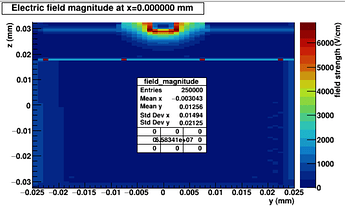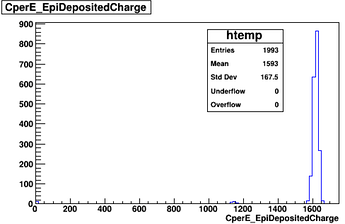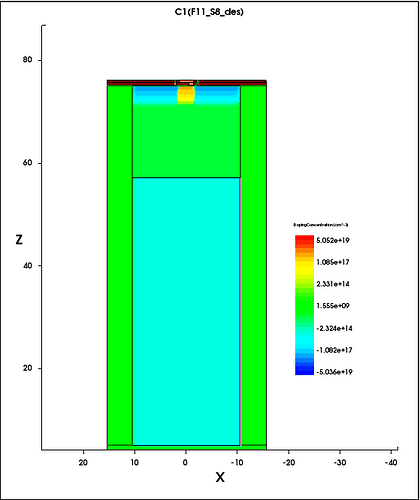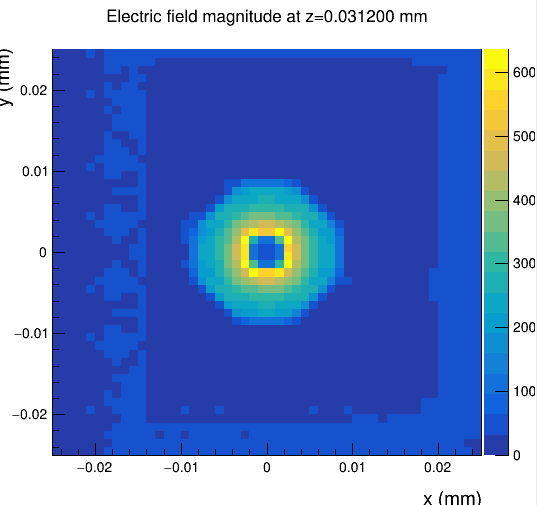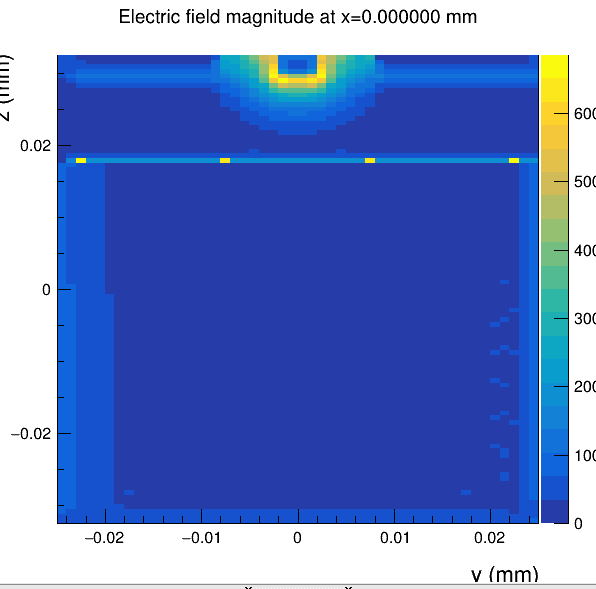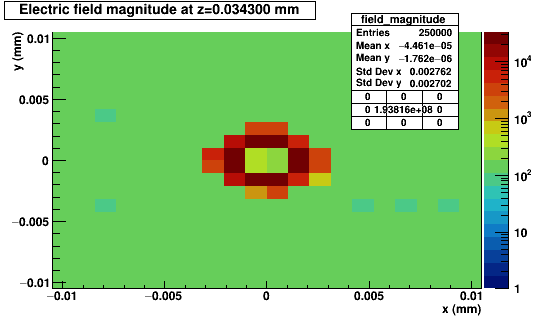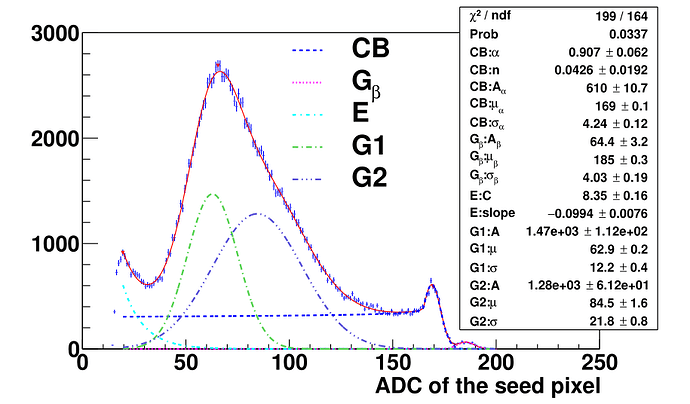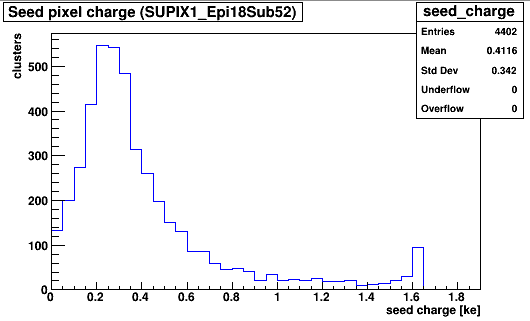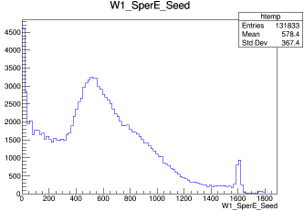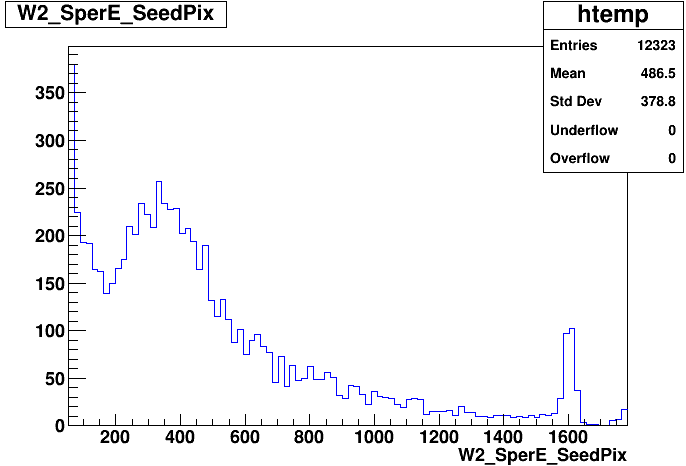Hello,
sorry to interrupt, I think I have some new problems. Through some experience on the forums, I tried to solve these situations myself, but unfortunately, I spent a lot of time and still had a hard time solving them.
I am currently simulating a high-resistivity epitaxial layer, and theoretically, some of the currently known experimental processes have a charge collection efficiency close to about 100% for their measured clusters, such as ALPIDE. So when I got only 30% of the results, I was confused.
After analyzing the recorded deposition energy and considering the energy that generated the electron-hole pair, I felt that the charge deposition part of my simulation was fine.
I think it’s because I have a problem with my method of using doping concentrations, because during my simulation, the carrier recombination ratio is super high, which means that my carriers are all recombination, and the following is my doping concentration distribution. ( As you can see from the graph below, their distribution is quite different)


my cofig is:
model = “init”
dimension = 3
region = “SiEpi” “Substrate”
observable = “DopingConcentration”
xyz = x y z
divisions = 50 50 100
observable_units = “/cm/cm/cm”
- I have some questions that may be more silly, for what is mentioned in the manual:
The profile is extrapolated along z such that if a position outside the sensor is queried, the last value available at the sensor surface is returned
Does this explain the content of only reporting the last Bin on the Z axis? Sorry, I don’t know if my statement is reasonable.
3.In addition, considering that the carriers are recombined during the simulation, I have read a lot of literature when doing TCAD simulations, which mentioned that some parameter values in the SRH model are not certain. Can I adjust our background script and change some of the relevant time parameters according to the relevant literature?

